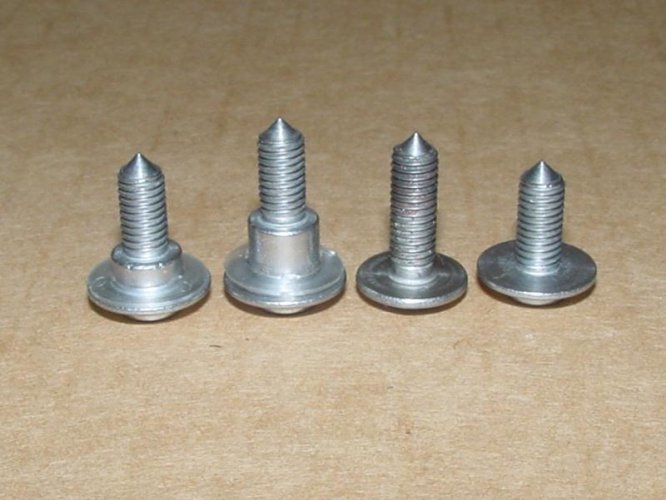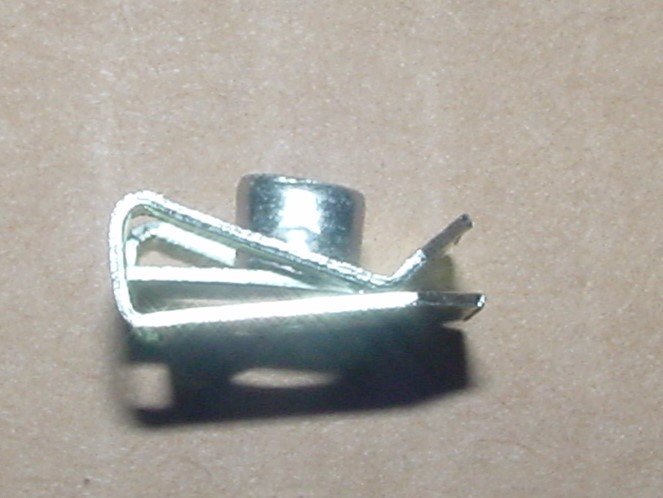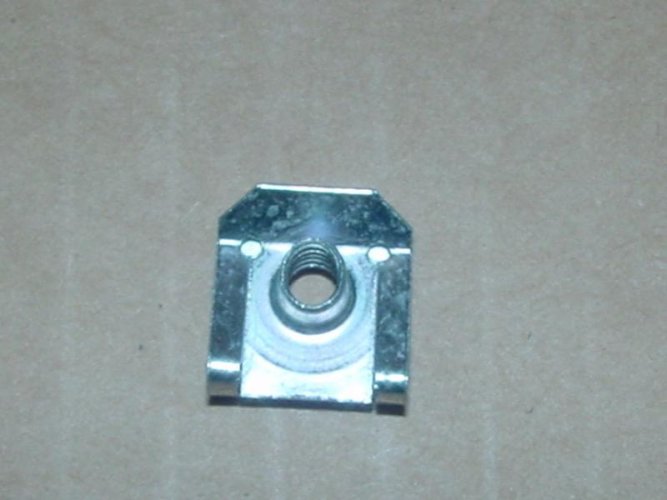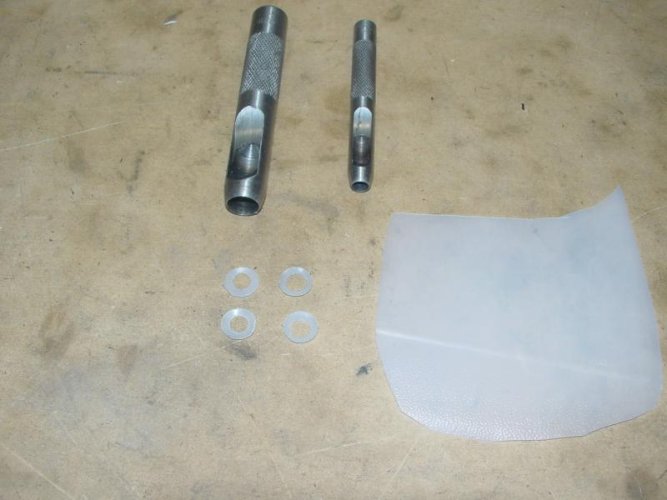On my 2018 R1200RTW many of the fasteners are of the Torx type. Most of the body work is secured by stainless steel m5 x 0.8 screws. The photo below shows the flanged T25 Torx head common to these fasteners. The BMW means that you won't find these at your local hardware store and the A2 is a designation for the type of stainless steel used (actually ASTM-304 corrosion resistant; http://www.volksbolts.com/faq/basics.htm ) -

The next photo shows a side view of the commonly used lengths of fasteners, with two different heights of shoulders. The screw with the taller shoulder is used where two body panels meet over the threaded nut; the shorter shoulder is more common and is where a single body panel is over the threaded nut -

The threaded "nut" is actually a "U-shaped" clip-on fastener. The next two photos show this U-clip.


One of the things that is quite interesting about the shoulder fasteners is that a nearly clear plastic washer is used. Perhaps this plastic washer is needed to keep from marring the paint on the body work. The photo below shows this small plastic washer -

When I have removed these T25 Torx fasteners I have sometimes had the clear plastic washer fall off and land on the garage floor. These fasteners become invisible when on my garage floor. It was thus necessary for me to come up with a strategy to replace the washers. An inexpensive, but seemingly suitable plastic material is the wall of a milk jug. I use a 1/2-inch hollow hole punch to generate a number of 1/2-inch diameter plastic discs. I then use a 1/4-inch hollow hole punch to create a hole in the 1/2-inch discs. The centering of the punch is done by eye and is approximate. These replacement plastic washers fit and seem to work well with the shoulder T25 Torx screws. The photo below shows the hollow hole punches, a piece of milk jug, and several generated plastic washers. -

A set of hollow hole punches can be obtained from Harbor Freight for less than $10. Link follows -
https://www.harborfreight.com/9-piece-hollow-punch-set-3838.html

The next photo shows a side view of the commonly used lengths of fasteners, with two different heights of shoulders. The screw with the taller shoulder is used where two body panels meet over the threaded nut; the shorter shoulder is more common and is where a single body panel is over the threaded nut -

The threaded "nut" is actually a "U-shaped" clip-on fastener. The next two photos show this U-clip.


One of the things that is quite interesting about the shoulder fasteners is that a nearly clear plastic washer is used. Perhaps this plastic washer is needed to keep from marring the paint on the body work. The photo below shows this small plastic washer -

When I have removed these T25 Torx fasteners I have sometimes had the clear plastic washer fall off and land on the garage floor. These fasteners become invisible when on my garage floor. It was thus necessary for me to come up with a strategy to replace the washers. An inexpensive, but seemingly suitable plastic material is the wall of a milk jug. I use a 1/2-inch hollow hole punch to generate a number of 1/2-inch diameter plastic discs. I then use a 1/4-inch hollow hole punch to create a hole in the 1/2-inch discs. The centering of the punch is done by eye and is approximate. These replacement plastic washers fit and seem to work well with the shoulder T25 Torx screws. The photo below shows the hollow hole punches, a piece of milk jug, and several generated plastic washers. -

A set of hollow hole punches can be obtained from Harbor Freight for less than $10. Link follows -
https://www.harborfreight.com/9-piece-hollow-punch-set-3838.html


